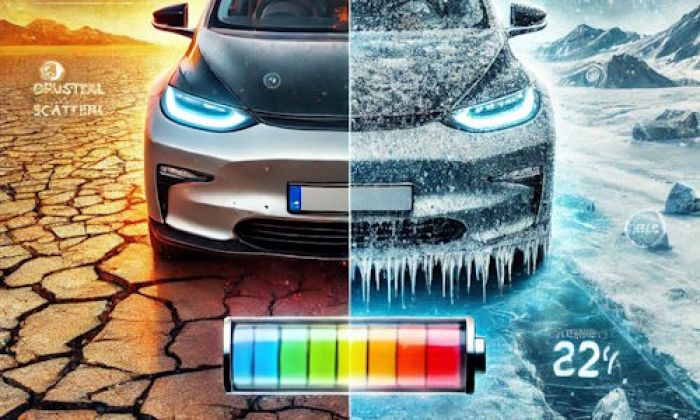Your VW Tiguan may be experiencing a loss of power, not accelerating like it used to, and a hiss or a rattling sound coming from the engine bay. The check engine light may also be blinking. Trying to diagnose the problem, you may discover the engine light is reading out P0299. This article will help you learn what the code means and help you narrow down on the issue and how to fix it.
P0299 code highlights
- Level of urgency:Medium
- Possible culprits:Turbocharger issues, fallen off or cracked pipes, air leak problems
- Price for repair:$150 - $800
- If neglected:Loss of power, harsh work, poor efficiency
- DIY repairs:Impossible
- Can you drive?Carefully

What Does the P0299 Code Represent?
The P0299 is a diagnostic trouble code representing an under-boost condition in VW Tiguan. When there's low output from the supercharger or Turbocharger, the check engine lights usually come on with the P0229 code on the dashboard.
This happens when the Engine control unit (ECU) detects a low boost that is not within a specific range of boost. It does this using a Manifold absolute pressure or the boost pressure sensor to monitor the intake manifold pressure or the engine vacuum. The vehicle will then go into limp mode to nip in the bud any further damage.
A turbocharger pressurizes the air entering the engine that is driven by exhaust gases to turn a turbine. More air entering the cylinder combustion chamber allows more fuel to be burned. Superchargers also work to pressurize intake air. A target boost level is not reached when there's an issue with the turbo or supercharger.
What are the Symptoms of the P0299 Trouble Code?
Symptoms indicating a low boost condition include:
- Noise coming from the Engine
If there's a low boost problem, one may experience a whining or hissing noise when accelerating. This can be a result of a mechanical failure during acceleration. A hissing sound from the engine area can be due to pressurized air escaping the charging system. Rattling noise coming from the engine can also indicate a failing Turbocharger. A blinking check engine light usually accompanies the noise.
- An Illuminating Check engine light
When the check engine light comes on in the dashboard of your vehicle, it can be a sign of a faulty Turbocharger. To confirm the exact issue causing the engine light to come on, one has to use an OBD II scanner tool.
- The Car Goes into Limping mode
An under-boost condition can cause the car to go into limp mode. It's a safety feature in the car that prevents engine damage in case an issue arises. When the vehicle enters limp mode, the ECU senses that the car is operating outside the normal range. It, therefore, regulates the power output of the vehicle.
- Loss of Power
A loss of power is one of the symptoms that indicates a low boost pressure. This means the supercharger cannot meet the pressure request by the ECU. A low boost causes the p0299 code to illuminate. This then makes the vehicle more sluggish than in its normal state.
How to Diagnose the P0299 Trouble Code?
You can use different tools to make the correct diagnosis of what's causing the low boost. This can save you the cost and time you use to replace the wrong device due to a wrong diagnosis.
Tools for Diagnosing the P0299 Code:
- Exhaust Back Pressure Gauge
The tool can help you diagnose the P0299 code. It does this by evaluating the turbocharger inlet temperature and the exhaust back pressure. A normal reading should not exceed 1-¼ PSI. If it exceeds this value, it means your vehicle has restricted exhaust.
- Turbocharger Rebuild Kit
You can use the toolkit to check if there's damage to the turbocharger. If the turbocharger rebuild kit finds that the turbocharger is damaged due to wear and tear, you'll have to replace the turbocharger or supercharger.
- OBD II Tool
An OBD II tool helps troubleshoot several issues, discover potential problems, and clear codes after repair.
How to Make a Diagnosis Using an OBD II Tool
The first thing is connecting the scan tool to the car's OBD-II port. You should then check the codes the tool indicates. Your next step is to note the freeze frame data (collection of parameters and conditions captured in memory when the diagnostic trouble code is set). You'll then clear the codes and perform a test drive.
After that, you can visually inspect the supercharger or turbocharger system and other systems, such as the EGR and the intake system. You can then use the scan tools to examine the proper boost pressure readings. If you find and solve the issue, you can use the tool to clear the p0299 code.
What Can Cause the P0299 Trouble Code?
An issue that causes the p0299 trouble code range from the simplest issue, such as a dirty EGR valve to a more complex one, like a failed supercharger or turbocharger. The issues that trigger a P0299 code usually restrict the ECU from reading the needed boost pressure. Causes of the P0299 code include:
- Air Intake Blockage or Leaking in the Exhaust Gas Recirculation System
A leakage or blockage of the EGR system can cause the p0299 code. A dirty air filter may also trigger the p0299 code. To fix the issue, you should clean up the Exhaust gas recirculation valve and the air filter. This can save you the pain of having to replace the turbocharger completely.
- A Failing Turbocharger or Supercharger
Turbochargers and superchargers function as forced induction systems. The systems generate an extra power boost by using compressors to push compressed air into the engine. The compressed air allows extra oxygen to reach the engine's combustion chamber, increasing the engine power output.
The difference between a turbocharger and a supercharger is the source of their power. Superchargers are powered directly by the engine, while turbochargers rely on exhaust gases for power.
A faulty turbocharger can result from operating at extremely high temperatures and RPM. If your car is sluggish in reacting to your input or isn't accelerating as powerfully as in its normal state, it may be a sign of a failing turbocharger. A whining sound from the engine and black smoke from the tailpipe may also be a symptom of the issue.
- A Faulty Boost Pressure Regulation Valve
The boost pressure regulation valve works by controlling the turbocharger wastegate. The wastegate is a device that controls the flow of exhaust gases by allowing them to bypass the turbocharger's turbines.
It's controlled electrically or mechanically. If the wastegate is in a closed position, it ensures the target boost level is met before it opens. Once it opens, the exhaust gases bypass the turbine and maintain a steady charge pressure. If the boost pressure regulation valve is faulty, there'll be no buildup of the boost pressure.
Failure in the wastegate actuator can also cause an under-boost condition. Damage to the wastegate lever can prevent the valve from forming a good seal that prevents a buildup of boost pressure.
- Low Oil Pressure
A P0299 trouble code can also mean a low oil pressure due to a lack of oil. Insufficient oil can lead to your vehicle shutting down or overheating. This can be because of a leak in the intake system, a clogged air filter, or a decline in oil pressure.
The low oil pressure can be due to a failing oil pump, leaking oil, or improper oil viscosity. You can solve this issue by checking your oil level and adjusting it accordingly. Consult your mechanic to service your turbocharger if the issue persists.
- A Failing Diverter Valve
A failing diverter valve is also a common cause of the under-boost condition. A diverter valve is a pressure release system device you can find on the side of the turbocharger. The two types of diverter valves are the piston and diaphragm.
The function of the diverter valve is to recycle unused pressurized air back into the system to prevent a compression surge when the car is accelerating. The valve keeps the compressor wheel in motion by rerouting the pressure into the compression inlet. This decreases turbo lag.
You can experience a loss of power due to a damaged diverter valve. Exposure to oil residues and high temperatures can cause damage to the diaphragm in the diverter valve. You can test the condition of the piston or diaphragm valves by removing the valve and opening the screwdriver handle by attaching the vacuum tubing to the vacuum pump and valve inlet.
If the valve doesn't hold any vacuum, it means the diverter valve is faulty. To fix the issue, you need to replace the diverter valve to restore the engine's correct boost levels since the exhaust gases may bypass the turbine.
- A Defective Boost Pressure Sensor
The function of the boost pressure sensor is to transmit small fluctuations in the air-fuel ratios and air pressure to the boost controller. This is to regulate the performance and efficiency of supercharged and turbocharged engines.
If the boost pressure sensor fails, the engine runs in emergency jumps, causing the engine warning lights to illuminate. Your car may also experience a decline in performance, an engine running rough, and an increase in fuel consumption. If you experience the symptoms of defective boost pressure, you'll have to make a correct diagnosis using a diagnostic tool before you can replace the boost pressure sensor.
Bottom Line
There you go - a breakdown of the causes of a VW Tiguan under boost and how to fix them. If you have no skills to fix the issues, your best option would be to visit a professional mechanic to help you fix the issue.
About the authors
The CarAraC research team is composed of seasoned auto mechanics and automotive industry professionals, including individuals with advanced degrees and certifications in their field. Our team members boast prestigious credentials, reflecting their extensive knowledge and skills. These qualifications include: IMI: Institute of the Motor Industry, ASE-Certified Master Automobile Technicians; Coventry University, Graduate of MA in Automotive Journalism; Politecnico di Torino, Italy, MS Automotive Engineering; Ss. Cyril and Methodius University in Skopje, Mechanical University in Skopje; TOC Automotive College; DHA Suffa University, Department of Mechanical Engineering






Add comment